If you liked our piece on Balmoral Boots, chances are you will adore Button Boots. In this article, we take up the case of this unique style that once held pride of place in every gentleman’s shoe closet: The Button Boot.

Blackwatch Tartan Button Boots 
Otsuka Button Boot in Brown
Brief Button Boot History
A comprehensive history of men’s dress boots is beyond the scope of the present article, however, a quick glance will help you understand the role it played in years gone-by.
Ankle boots dominated men’s daytime footwear up to the early twentieth century. While the button boot followed, more or less, the same trajectory as the Balmoral Boot, it was Queen Victoria who took the lead on buttoned style. Her preference for ankle boots set the trend for both men and women. Up to the end of the Victorian era, men only wore boots especially during the day and changed into court slippers for evening wear. Over time, long riding boots became more common and dress boots were worn for more formal events only. With the passage of time, shoes replaced boots and the dress boot, more or less, disappeared from people’s minds and feet.
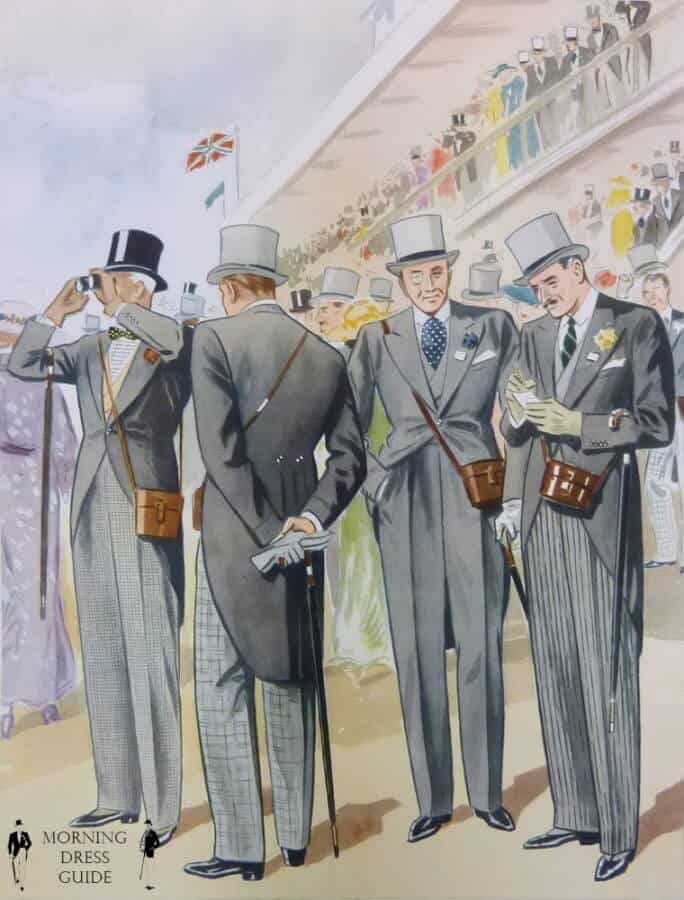
Queen Victoria Introduces Button Boots
First, the question arises: why buttons in place of laces? The answer to the question can be found not in menswear but in womenswear. Before the advent of the button boot, the preferred choice of ankle boot was the Balmoral. However as hemlines began to move upwards a woman’s feet were open to scrutiny. To give an impression of having feminine feet industrious boot makers added overlapping edges that fastened with buttons instead of the traditional laces allowing women to wear smaller sizes, the bulging flesh over the top of the boot remained hidden under their skirts. The boots, as in the case of the Balmoral, cover the ankles so there was no danger of exposed ankles which was still not considered acceptable. Men, not to be left behind, quickly adopted this design, presumably without the need to wear smaller sizes.
Men did not want to be left behind, quickly adopted this design even without the need to wear smaller sizes. Today, just like back then it was simply all about the looks!

Button Details 
Button Boot Toe
The 1880’s
The button boot became extremely popular with both men and women and in the 1880s, they began to be mass produced thanks to cost-effective machines that specialized in button attachments. An Elias Howe was the first to patent a sewing machine for cloth in 1845 which led to a number of sewing machines for different tasks. James Morley, from Massachusetts, patented an industrial button sewing machine that enabled buttons to be fed into an existing stitching machine. This enabled the mass production of button boots which paved the way for their success.
Besides being both fashionable and attractive, button boots were also considered to be practical and functional as the buttons would not get loose, unlike laces that would come undone as the day wore on. However, it was quite difficult to button up and therefore, a button hook was invented. This device facilitated the buttoning process and became as essential in a wardrobe as a shoehorn.
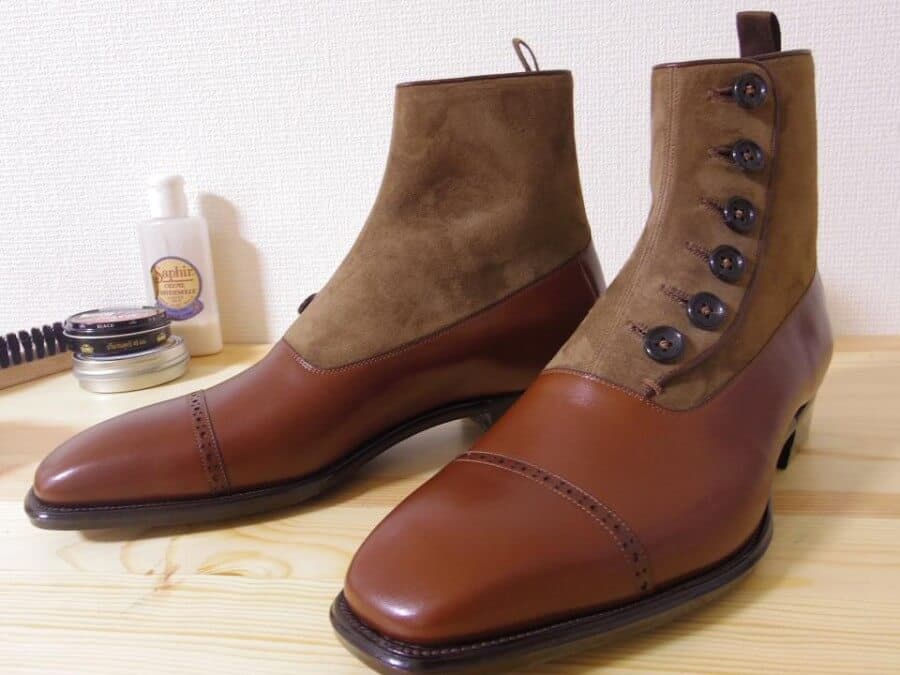
During the early 20th century, the button boot began to drop in popularity but continued to be worn till WWI. With it came rationing including that of leather and other items which led to the rise of frugality and a preference for function. Nevertheless, button boots continued to be worn among the more affluent members of society. However in 1933 U.S. President Roosevelt revised the Department of Labour’s cost-of-living index. This index was used to determine the wages of federal employees and included a list of consumer goods. Among many others, was removed from this list and thus in its September 25, 1933 issue, the ‘Time’ magazine declared the death of the button boot.
Button Boots Today
Fortunately, button boots have become increasingly popular with men interested in fine clothing and quality footwear. As such, one could argue that it is currently undergoing a renaissance and it seems like more shoemakers are willing to add these boots into their Ready-To-Wear program whereas it was exclusively reserved for bespoke or Made-To-Order projects in the past.
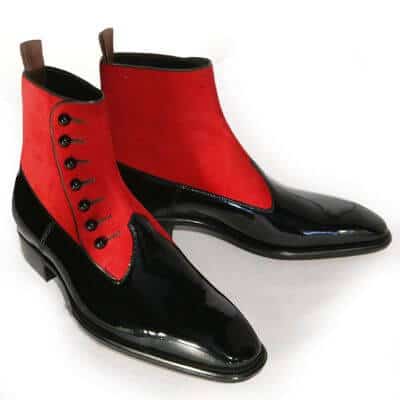
Characteristics of the Button Boot
Having more or less evolved from Balmoral Boots the Button Boot share many of the characteristics with a few differences:
- The same distinctive seam of the balmoral that runs parallel to the ground, starting at the throat line near the vamp and meeting at the rear of the boot thus dividing the boot into upper and lower portions. The upper portion is referred to as the top.
- Extends above the ankle.
- Center seam in the back running the entire length from the heel to the top of the boot.
- Leather soles.
- Overlapping edges on the upper portion or top that are fastened with buttons ( usually five to six ) on the outside of the shoe i.e. can be seen clearly and not hidden between the wearer’s feet.
- Usually available only as a Quarter brogue i.e. cap toes with broguing only along the edge (no medallion).
- Usually comes in a two-toned version i.e. contrasting uppers and vamp, both in terms of color and material.
Button Boot Style Advice
The Classic
The most classic button boot is probably the black boot with contrasting white, off-white or grey suede leather contrast. The buttons are either mother of pearl or dark horn. This is the boot that inspired the use of spats! Men who couldn’t afford a proper pair of buttons boots would simply use a pair of spats to achieve the two-tone effect.
This kind of boot looks vest with Stresemann / Stroller outfits, Morning Coat ensembles, cashmere striped trousers, charcoal suits and anything else that is dark and meant for daywear. Because of its stark contrast, it’s only for people who don’t mind getting noticed.
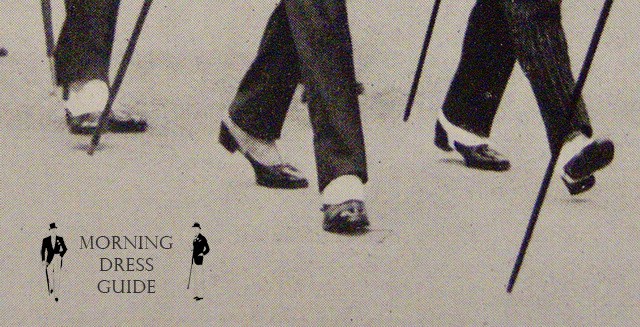
Modern Buttons Boots
Contemporary button boots come in all kinds of combinations. Brown, blue, green, red – nothing is impossible and instead of solid suede inserts shoemakers play with fabrics such as flannel or tweed. As such they are often not suited for formal daywear outfits and instead they pair well with informal suits, combinations and sport coat outfits.
They can even work with denim or chinos!
The Button Boot is an excellent choice for the dandy because it is unusual, yet classic at the same time and with its two-tone heritage it is automatically louder than a classic brogue or oxford. However as dandyism is not the actual focus of this gazette we would not like to venture into its waters.
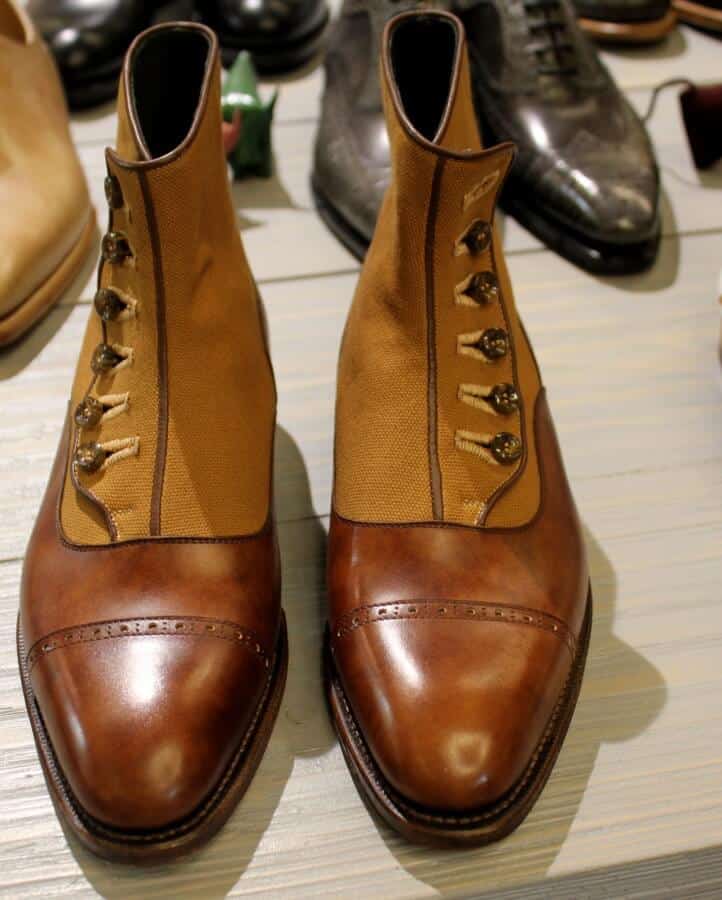
How To Button The Boots
The traditional way is to use a hook in this way:
- Open your button boot all the way. I suggest you wear them with over the calf socks because otherwise, your skin sticks to the leather lining which is quite uncomfortable.
- Once you put your shoe on, you get your button hook through the hole. It doesn’t matter which direction you insert it.
- Take your button hook and hook it in the shank underneath the button. Now, simply turn clockwise or counterclockwise. Both work and it only matters what you find more comfortable. Usually, one may feel more comfortable than the other and you just have to figure out what works for you.
- Once you have closed your first button, you simply repeat the process. It should get easier the further up you get.
In case you do not have a hook, here is how you do it:
- Simply pull the leather and push the button through from the bottom. It helps to keep one side to the button already on the edge of the button hole so you can more easily push it through.
Button Boots Buying Guide
Button boots are a special category of shoes and hence they are quite pricey. Usually you do not find them under $600 and usually, you have to spend more. They are not easy to come by on the used market, which makes them a true investment piece that you might want to save up for. Below please find an alphabetical list of brands that make them.

Aubercy Lawrence Button Boot with interesting line and purple contrast insert 
Aubercy Brown Button Boot
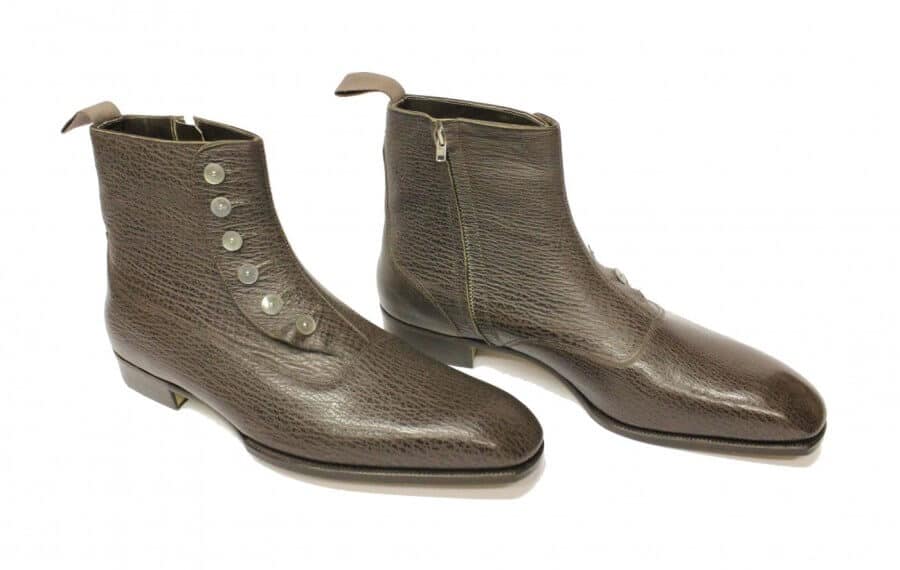
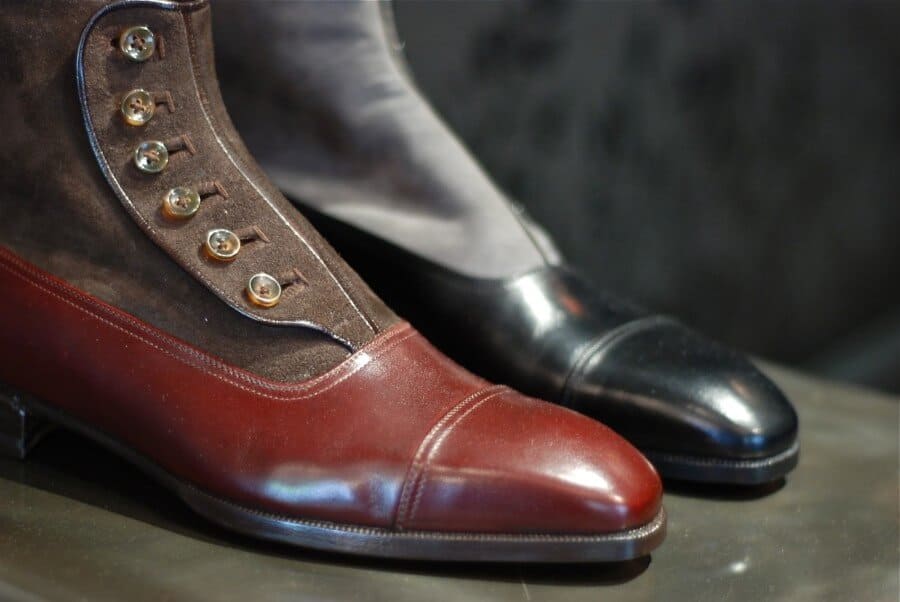
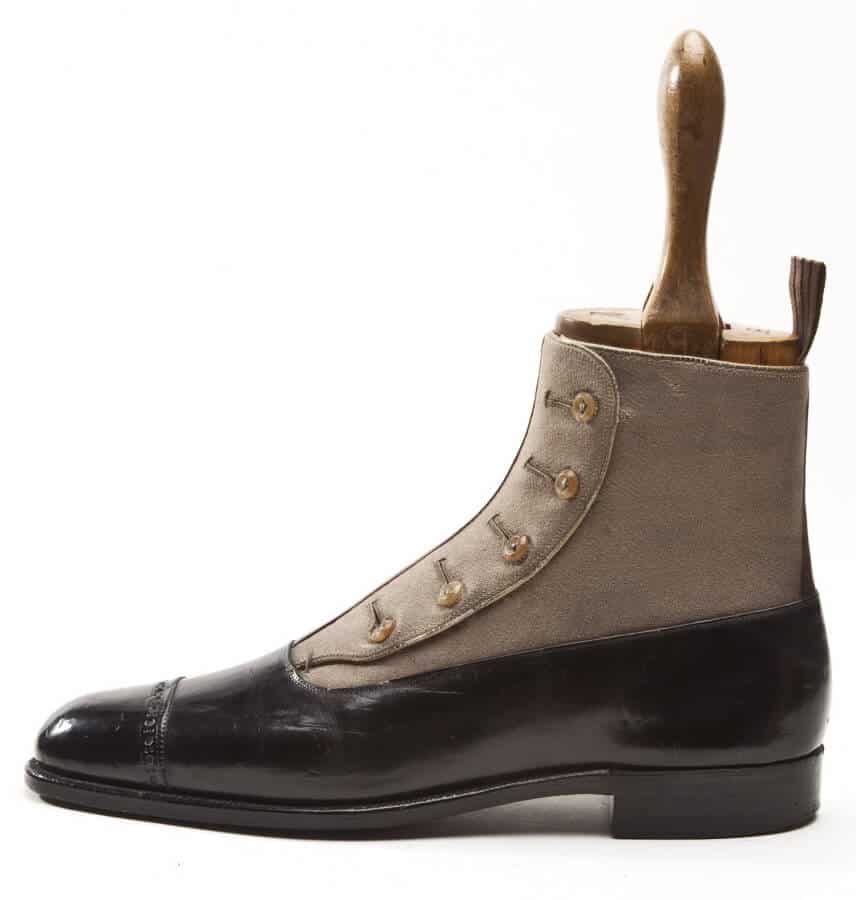
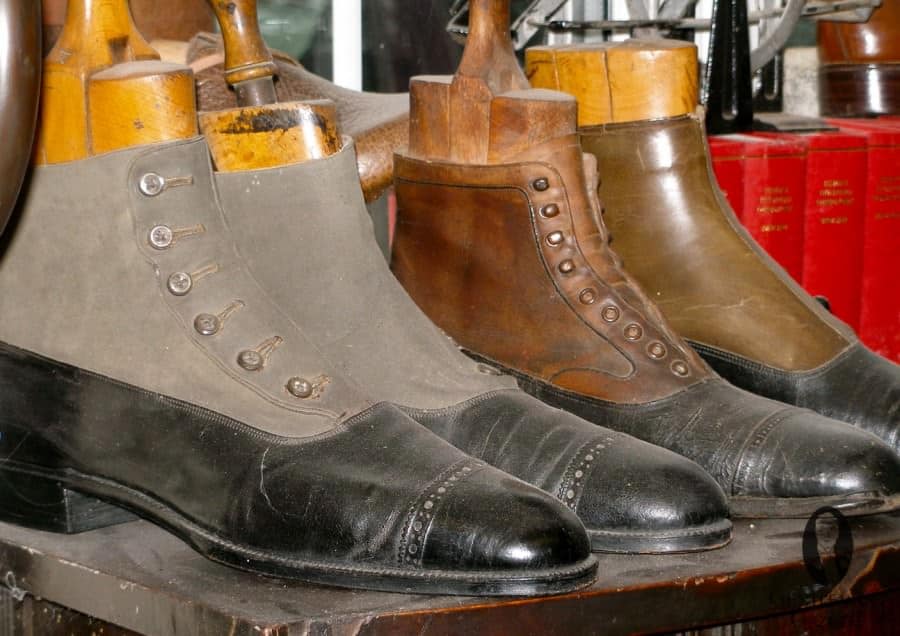
John Lobb
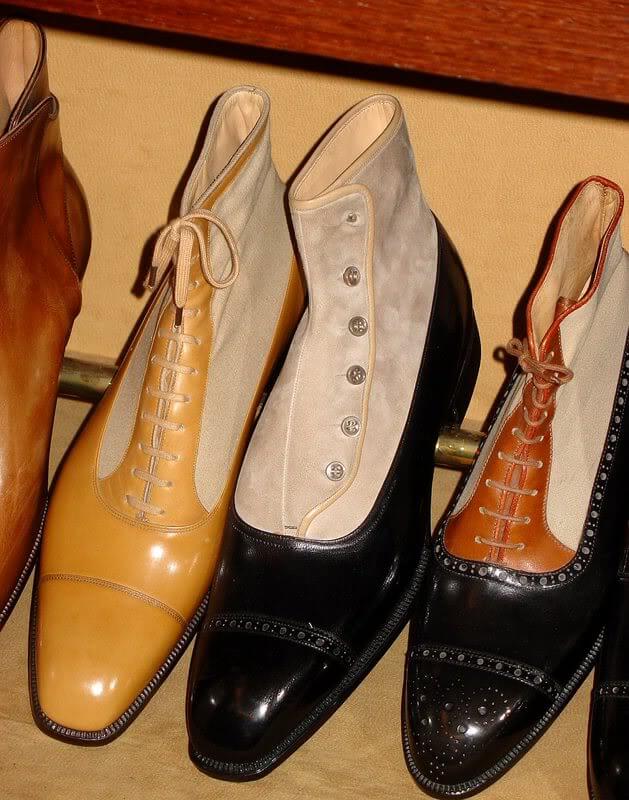
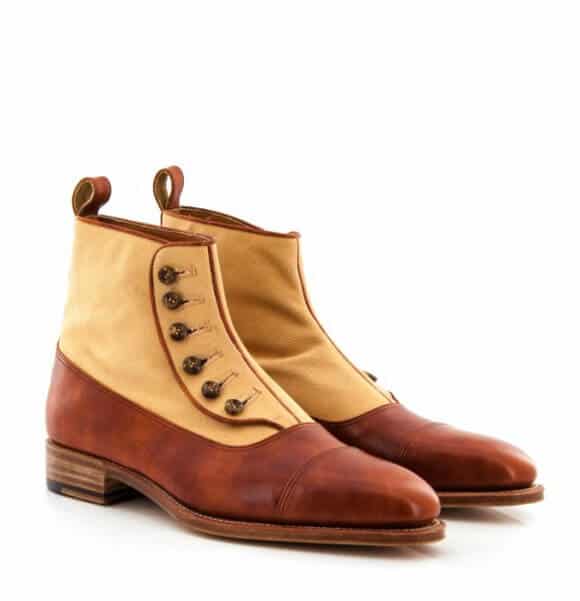

Maftei Button Boots 
Maftei Buttons Boots in reddish brown
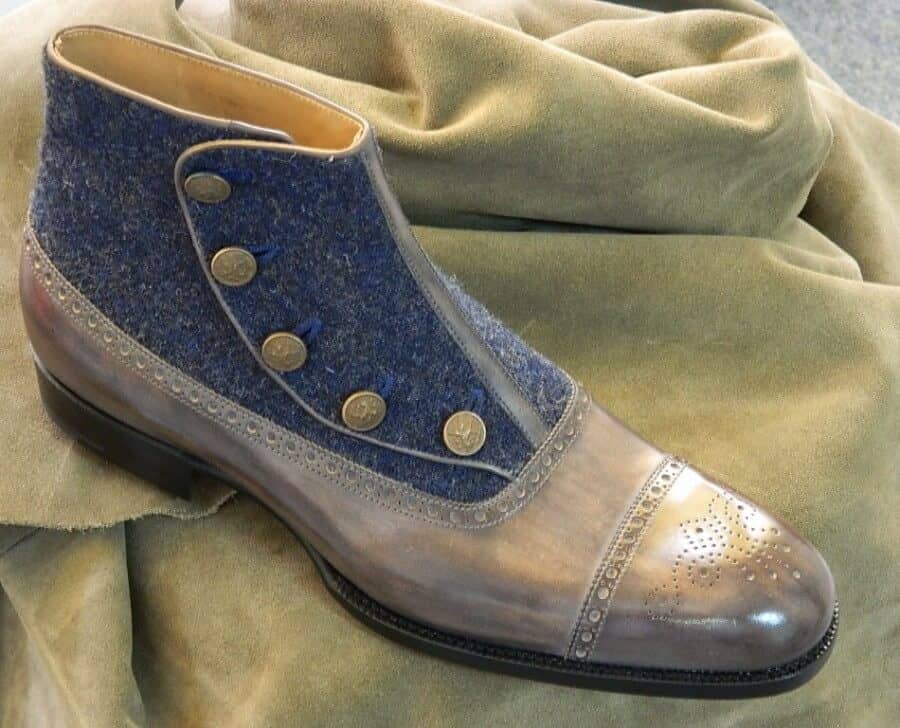
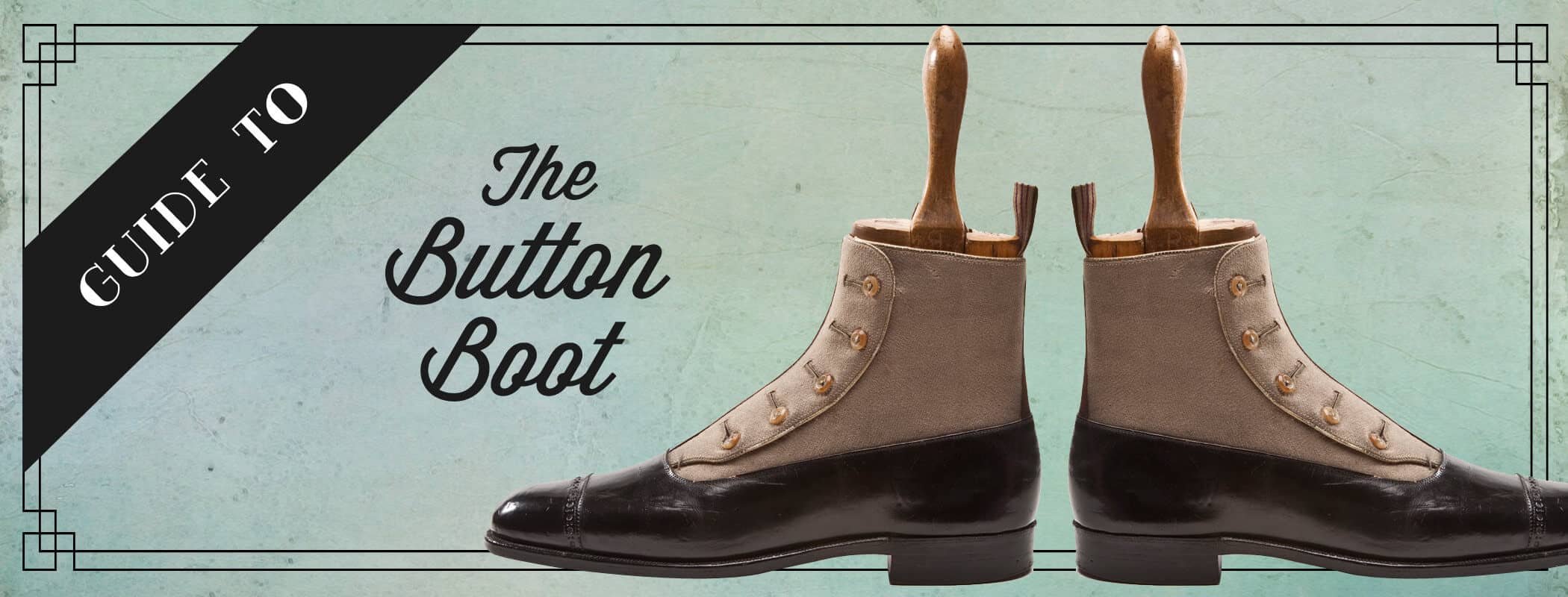
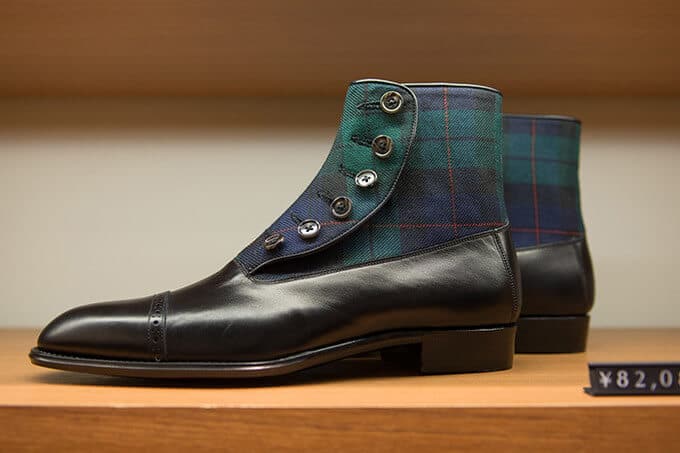
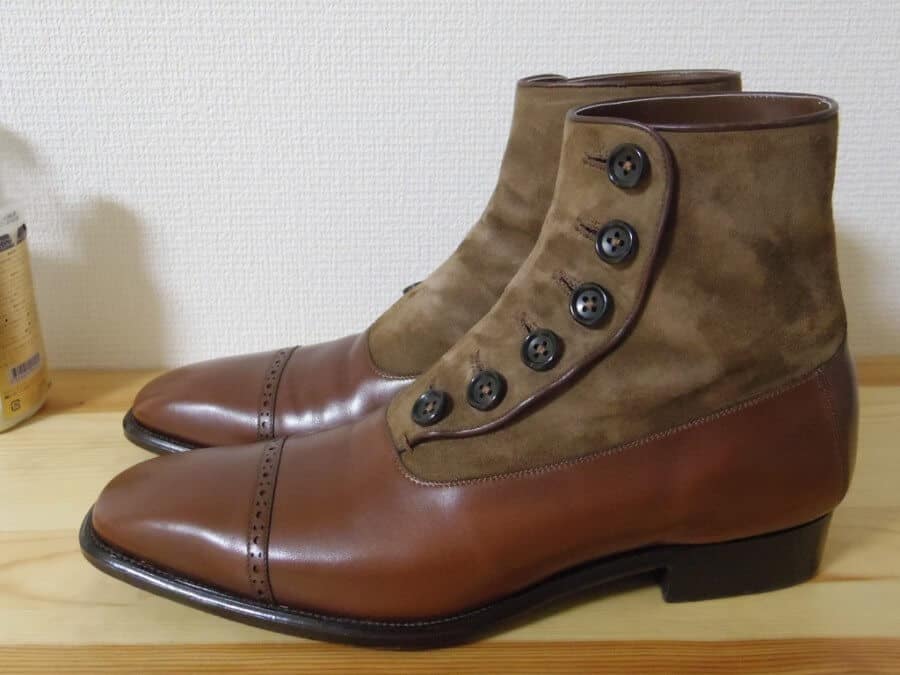
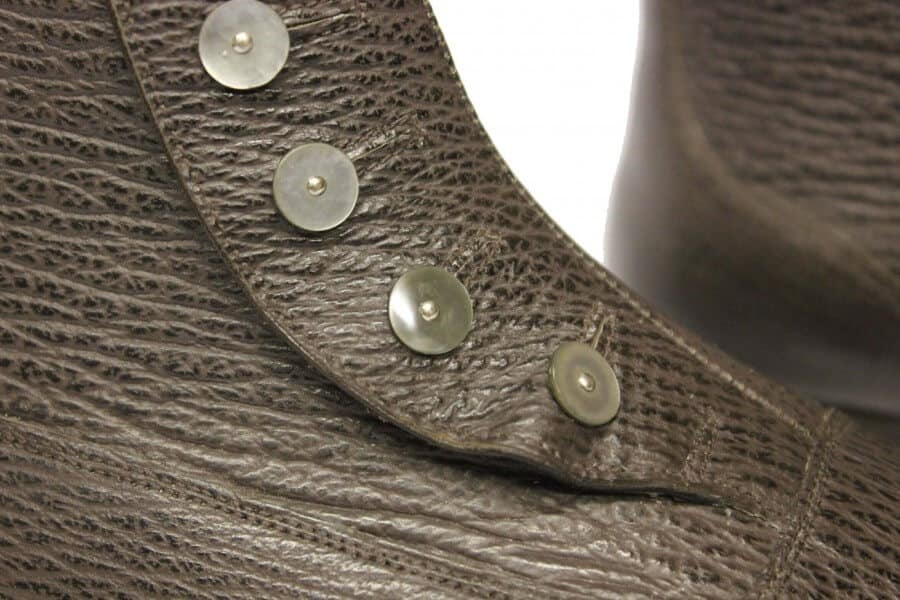
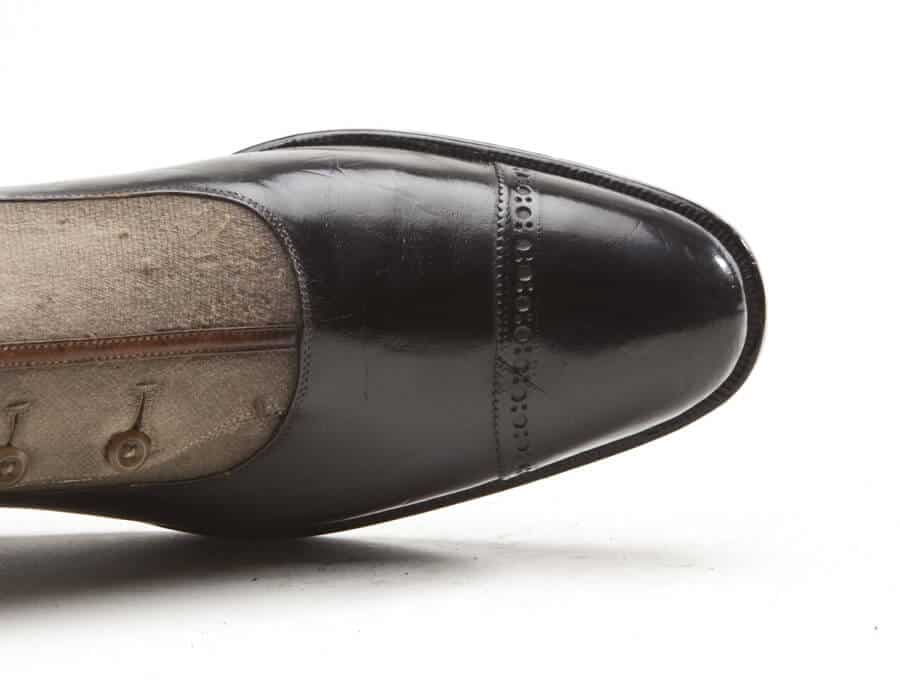

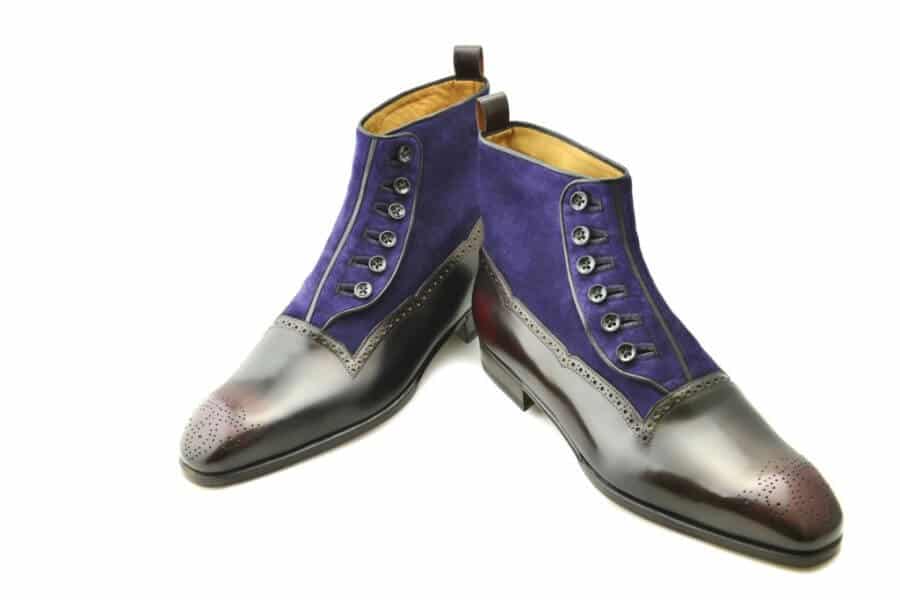
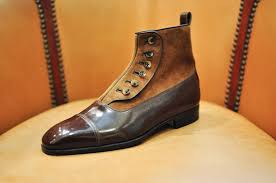
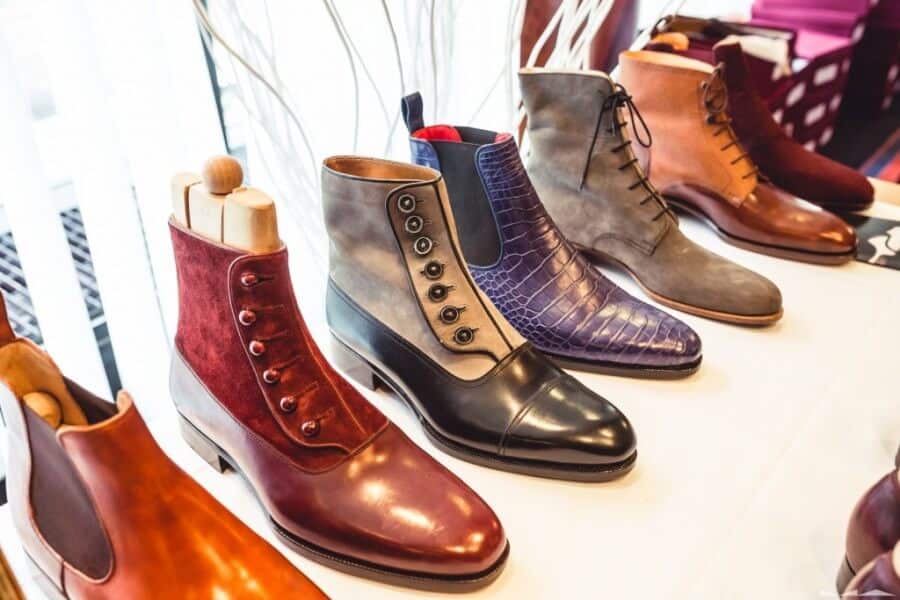
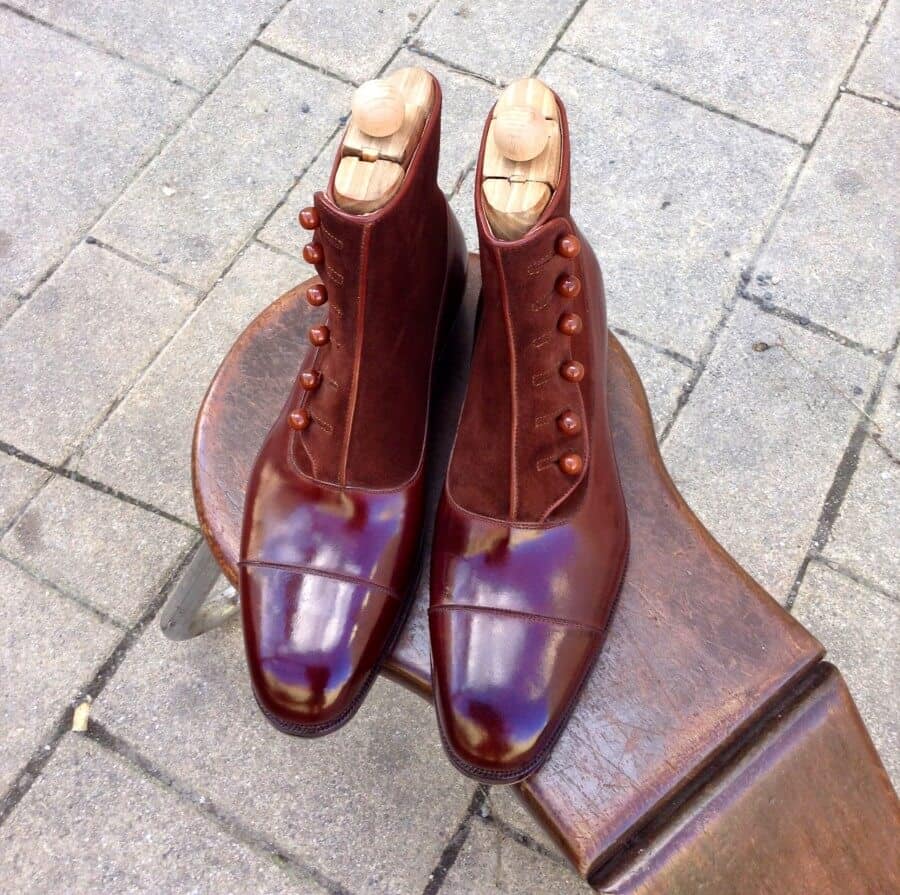
Dear Raphael ,
Another marvellous read , the construction and detail on these boots is amazing . I would give a firm shake of hand and pat on the back to any man wearing a pair . Those made by Maftei are spectacular – and shiny . I spend a little time every day polishing my shoes , it helps me relax.
The big selling boot here in Australia is R M Williams which you are aware off , not though stylish as this article feature .
DEAR EDITOR,
WHILE YOUR READERS HUNGER FOR ARTICLES ON TWEED JACKETS, LIKE THOSE OF “BEN SILVER”, YOU
DIDDLE WITH YOUR SMALLEST AUDIENCE, “THE BUTTON BOOT BOYS”. GET SERIOUS MR. EDITOR, YOU ARE
PREACHING TO THE MICE IN THE LAST ROW OF THE CHURCH BALCONY.
RESPECTFULLY,
M. A. KOLIGIAN, D.V.M.
Dear Michael,
I find quite preposterous that you think you know what our audience is or is not, because you obviously do not know anything about our readers. Just because you are interested in Ben Silver tweed jackets doesn’t mean that everyone else is too.
If you feel so strongly about Ben silver Tweed jackets, why don’t you write your own article about it?
Btw, we already have an extensive tweed guide.
Sven,
Bravo for the defense of your audience. In addition to preposterous, presumptuous is an adjective I would use. Your blog is unique, stylish and always informative. Personally, I find articles like this one on button boots fascinating. Have wanted a pair of button boots for years and they are not easy to come by. However, fellow readers should know that here in New York City, Leffot located on Christopher Street in Greenwich Village does get them from time to time. Prices are what one would expect, but the boots are spectacular and well worth the investment.
I agree with M.A.K. but leaving that aside I worry about your assertion that “This is the boot that inspired the use of spats! Men who couldn’t afford a proper pair of buttons boots would simply use a pair of spats to achieve the two-tone effect.” Are spats not an abbreviated, in both senses, form of the spatterdashes or gaiters which had been worn for many years before button boots? It would seem that all the members of the Drones Club wore them, including Bertie who also mentions that his Uncle Tom and Lord Bittlesham wore them, most of whom could no doubt afford whatever type of boot he wished – and none of the gentlemen in your illustration appears impecunious.
By the way, what has become of Gentlemen’s Quotations? A series was introduced on June 11, 2012 but there seems to have been only one other instalment.
The quotations were not popular, so we discontinued them.
Queen Victoria was Bertie’s mother, it is not uncommon that sons want to break with the fashion of their parents ;)
Touche Raf…..
Hi Raphael
Good article. I always enjoy learning about how to dress better. What was the purpose of spats? Were they just a status symbol?
Very interesting article into a hitherto unknown ( to me) subject. I am wondering if there is is any
connection between spats and old style military parade gaiter ( which were heavy canvas, white, looped
under the instep and clipped by brass sleeves along the outside of the ankle.
I rather like the tartan buttoned boot at top, can one obtain such a boot in one’s own tartan perhaps?
Cheers
Sure, every custom shoemaker should be able to do that for you.
Thanks Sven! Did you receive my email about ‘The Crown’ TV series? I would love to see an article by you with your thoughts on the men’s fashion presented.
No, I did not. I wasn’t impressed with the show and the Duke’s gapping collars.
Dear Sven,
I love your site and articles. You forgot the Austrian make Zak, who make a beautiful read-to-wear button boot in various color combinations – similar to those by Bonafe.
Dennis, Bonafe makes the shoes for Zak hence the similarity and no mention ;)
Thanks, Sven. Good to know.
Rapheal,
I loved this article on button boots. I have a keen interest in history as well as men’s fashion and this was interesting on both fronts.
Wow – some stunning boots in the pics!
I’m not a boot wearer, so I’ll admire from afar.
Another great article!
1. Impressions / reviews on Justin Fitzpatrick suede upper button boots?
2. How do you polish these things? Painter’s tape at the leather / suede boundary?